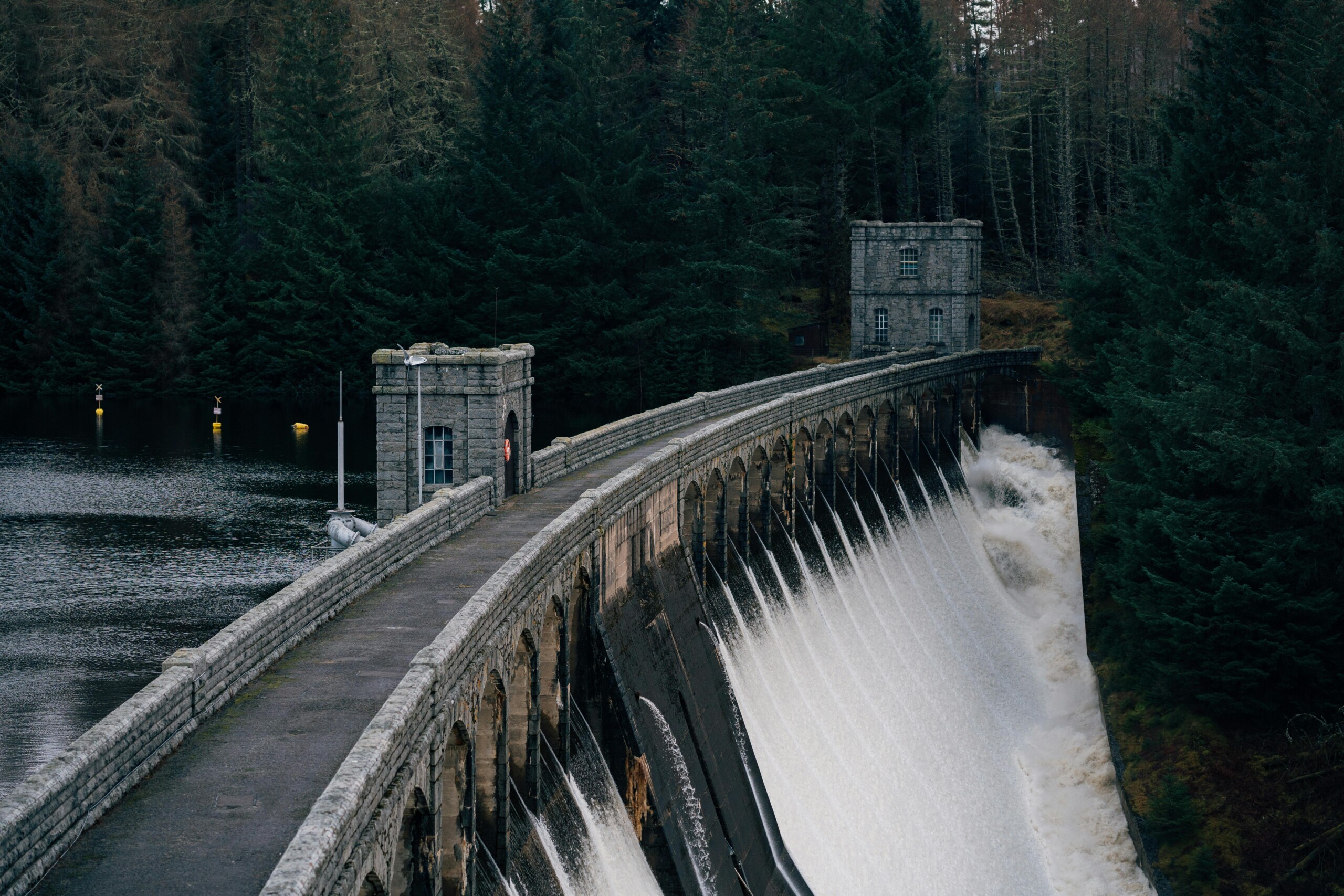123Fab
1 topic, 2 key figures, 3 startups to draw inspiration from

Hydropower is a form of renewable energy that draws its power from the movement of water. Today, it accounts for over 20% of global electricity production.
Hydropower plants: towards small-scale and modular solutions
Hydropower, one of the oldest electricity production methods, generates up to 90% of electricity in countries like Norway, Brazil, and Canada. However, large-scale projects like China’s Three Gorges Dam have raised concerns due to their environmental and social impacts, including biodiversity loss and population displacement.
To address the drawbacks of traditional hydropower, innovators are developing solutions:
- Smaller-Scale Designs: Startups like Turbulent create modular vortex turbines that minimize environmental impact by operating without large dams.
- Fish-Friendly Turbines: Companies like Natel Energy are pioneering turbine designs that greatly improve fish survival rates.
- Standardized Containers: NuSTREEM’s NuCONTAINER system uses prefabricated standard shipping containers as powerhouses, reducing foundational requirements and on-site construction.
Tidal energy: taping the ocean’s energy
Tidal energy is generated from the natural rise and fall of the tides, caused by the moon’s gravitational pull. In France, the Rance tidal power plant—opened in 1966—was the first in the world and remains the only one in the country still operating today.
While traditional plants like Rance use the tidal range to produce electricity, newer technologies focus on tidal stream generators, which look like underwater wind turbines. Off the coast of Brittany, for example, these turbines help power the island of Ouessant by capturing the energy of moving water.
To further reduce environmental impact and expand deployment, other innovative solutions are being developed:
- Underwater Kites: Swedish startup Minesto is pioneering “underwater kite” systems that can generate electricity in slower currents, vastly expanding potential deployment areas.
- Floating Platforms: Companies like Orbital Marine Power are developing floating tidal turbines, making installation and maintenance easier while reducing environmental impact.
- AI-Optimized Arrays: Machine learning algorithms are being developed to optimize the placement and operation of tidal turbine arrays, maximizing energy capture.
Wave energy: unlocking the motion of the sea
Oceans, considering that about 70% of the Earth’s surface is taken by water, have not been well tapped for energy. There are various systems in place, namely floating and submerged devices, but most are at the development stages. The International Energy Agency estimates wave energy can provide as much power as 60 nuclear plants combined.
To tap into this vast resource, several companies are developing innovative solutions:
- Grid Connected Wave Energy Array: Eco Wave Power develops patented technology that captures wave energy from coastal structures and converts it into electricity.
- Offshore Buoys: Sweden’s CorPower Ocean has designed a compact wave energy converter in the form of a buoy, inspired by the pumping motion of the human heart, increasing efficiency in capturing wave energy.
Seawater thermal energy: heat from the sea
Seawater thermal energy utilizes the temperature differential between warm surface seawater and cooler deeper water to provide heating and cooling solutions. Through heat exchangers and pumps, this process transfers thermal energy from the sea into climate control systems for buildings located near the coast. Monaco for instance, produces nearly 20% of its energy from seawater heat pumping.
Rain-powered solar panels: a future innovation
Researchers from Tsinghua University in China are currently working on a new type of solar panel that can generate electricity even in the rain.
2 Key Figures
20%
Hydropower accounts for 20% of the world’s total electricity and 90% of global renewable energy
X2
To meet net zero goals hydropower needs to double by 2050
3 startups to draw inspiration from

Minesto
Founded in 2007 as a spin-off from Swedish aerospace manufacturer Saab, Minesto is a developer of marine energy technology. The company offers an innovative underwater kite-like structure equipped with a horizontal-axis turbine, designed to efficiently extract energy from the ocean and tidal currents, even at low velocities.
Turbulent
This Belgian startup aims to provide reliable and affordable energy to even the most remote communities. Turbulent Hydro has developed an innovative vortex turbine that generates low-cost electricity without requiring large-scale infrastructure projects or causing significant environmental impact.
CorPower Ocean
A Swedish company developing wave energy converters to generate clean electricity from ocean waves. Their technology uses a unique system inspired by the pumping principle of the human heart, with a heaving buoy on the surface that absorbs energy from waves.
Interested in a startup landscape or in an insights report?
Please fill out our contact form so that we can get back to you very quickly with our product offer.
Want to subscribe to our 123Fab?
Fill out our form to receive the latest insights into your inbox.
